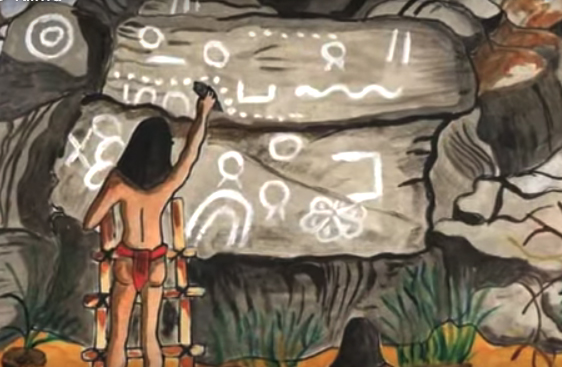Listen to the sound of kiliwa, an indigenous Mexican language that is about to become extinct …
by Mas De Mex‘s staff
When the world was created, nothing existed. Only darkness reigned, as in the night. Then came a man-coyote-moon? Melti ipá? and did it all.
This is how the origin is told in kiliwa, a Mexican language that is about to disappear. Of him only 3 speakers remain and they still live in the town of Arroyo de León in Ensenada, Baja California; the place that saw his language being born.
By telling their stories? Those of the past and everyday? The Kiliwas suggest a feeling that many speakers of Mexican languages are experiencing today: the immense loneliness of no longer having “someone to talk to.” Until recently there were 4 Kiliwas, but time has done the same and the family recently said goodbye to Hipólita, a speaker who died on April 30, 2019 at the age of 93.
And although the news does not resonate enough, it is powerful to imagine that only 3 people are now heirs of a language and of a way of structuring the world; with its myths, its gods, its concepts and sounds that in a few years could be spoken for the last time. But despite the impending loss, there is resistance in his speech.
Leonor Farlow, the last woman to speak in Kiliwa, does not give up hope of leaving her trail behind. Together with Arnulfo Estrada Ramírez (Ensenada chronicler) she collaborated in the creation of an illustrated dictionary that can be used so that anyone can learn the principles of kiliwa. However, as she herself admits, this language is not simple and deeply apprehending the way in which it abstracts the world is not any challenge.
In that sense, Arnulfo and Leonor affirm, this is “the decline of the ancient Kiliwa language.” They consider that any contemporary effort comes late to a history of loss of territories; migration to urban centers (for different socio-economic needs), and? above all? social discrimination and lack of official recognition.
It is clear that, as the linguist Yásnaya Elena affirms, no indigenous language dies in peace. But although this note leaves us with a relatively bitter taste, it should also serve to think about the way in which we are involved in ensuring the right of others to inhabit the world on their particular terms.
There are languages, people, ways of speaking and understanding life for which it is not yet too late.
In other arts related news:
Frida Kahlo Portrait Sells for Record $35 M. at Sotheby’s
Shared/by Angélica Villa
Arts News
A self-portrait by Frida Kahlo that had been held in a private collection for 30 years sold for a record-setting $34.9 million (including fees) at Sotheby’s in New York on Tuesday evening.
The painting, Diego y yo (1949), depicts the artist gazing tearfully at the viewer; superimposed on her forehead is an image of her husband, the muralist Diego Rivera, who himself has a third eye.
The result quadrupled the artists’s previous auction record of $8 million, notched in 2016 when her 1939 painting Two Nudes in the Forest (The land itself) sold at Christie’s in New York.
Just two bidders—one on the phone with Julian Dawes, Sotheby’s co-head of Impressionist and modern art in New York, and the other on the phone with Anna di Stasi, Sotheby’s senior vice president for Latin American art—competed for the work. The painting, which was offered in the sale with an irrevocable bid hammered with di Stasi’s client at a hammer price of $31 million, just above the $30 million low estimate. The winning buyer was Eduardo F. Costantini, founder of Malba, Museo de Arte Latinoamericano de Buenos Aires.
The Kahlo painting was sold by a descendant of a New York collector, who purchased it in 1990 at Sotheby’s for $1.4 million. Prior to that sale, it belonged to Chicago writer and critic Florence Arquin, who was a friend of Rivera and Kahlo.
Not only did Diego y yo bring a new artist record for Kahlo, it also become the most expensive work by a Latin American artist ever sold at auction, surpassing the previous record held by Rivera’s painting The Rivals, which sold at Christie’s for $9.8 million in 2019.
In a statement, Dawes said, “Tonight’s outstanding result further secures her place in the auction echelon she belongs, as one of the true titans of 20th century art.”




